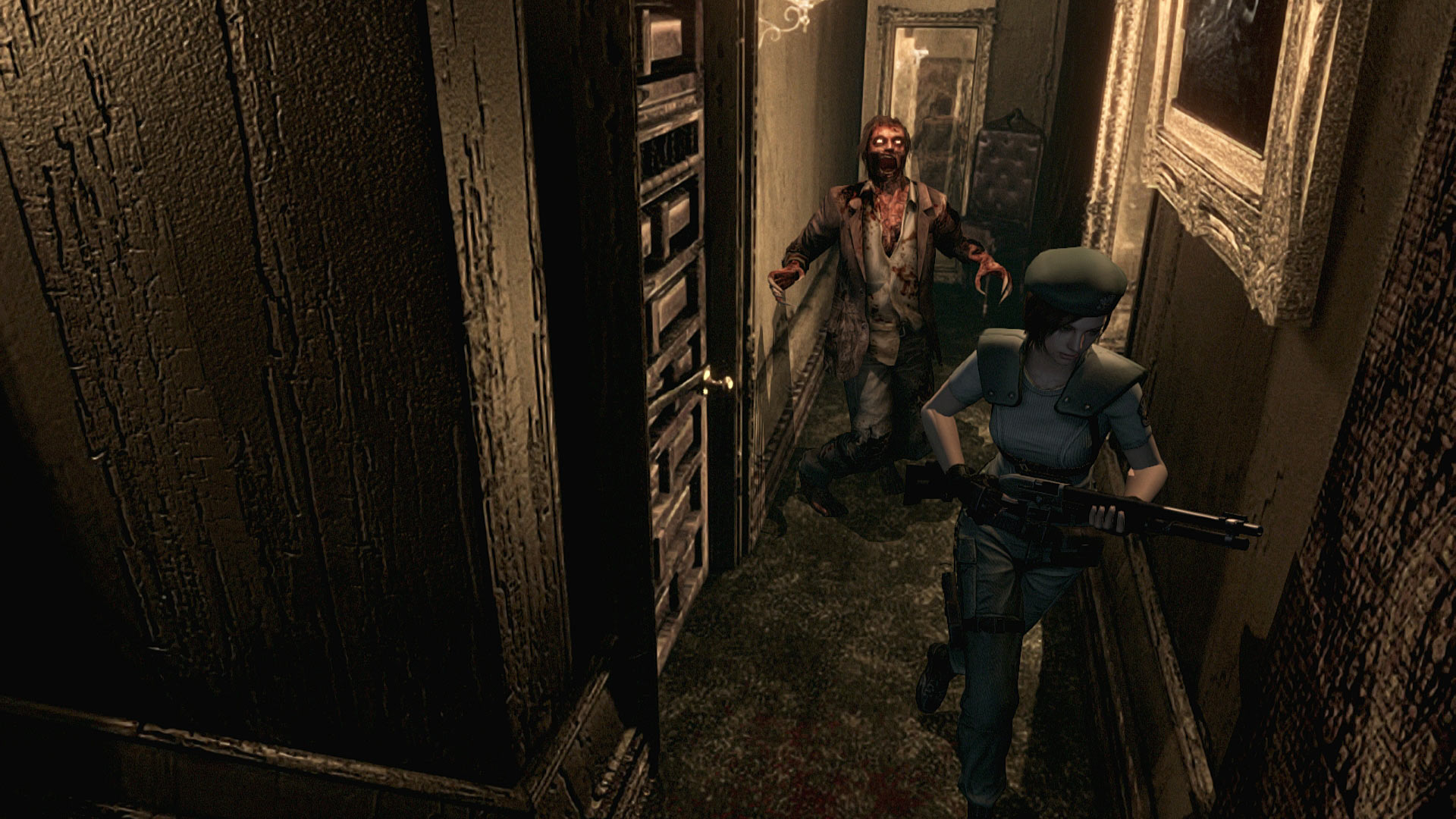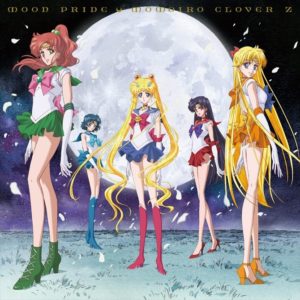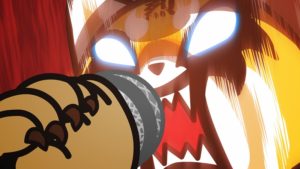
A dog crashes through a window.
Reading that, many would wonder, “What’s so scary about that?” Yet it happens to be an iconic gaming moment, one that defined Resident Evil (known as Biohazard in Japan). This was most likely the first jump-scare that players encountered in the game during their exploration of a mansion. Walking down an L-shaped corridor, a Cerberus, an infected dog, comes crashing through a window. As you run to escape, a second Cerberus comes flying through another window. You quickly realise that nowhere is safe, anything could happen and you need to get some Imodium.
Produced by Capcom, Resident Evil was first released in Japan on the Sony PlayStation on 22nd March 1996. While not the first survival horror game, it would eventually popularise the term. Twenty years later and it has spawned into a franchise with over 20 games that have sold over 60 million units around the world, as well as five big-screen film adaptations, with a sixth, and supposedly final film, set for release in 2017 (go for it Milla). There have been comics, mangas, novelisations, toys, a T-Virus perfume, a stage play and an amusement attraction at Universal Studios Japan, where you can shoot zombies. There was even a Resident Evil restaurant where you could order a Red & Green Herb Salad (however a ‘Jill Sandwich’ was not on the menu).
 |
 |
“They have escaped into the mansion where they thought it was safe. Yet…”
Work on Resident Evil began in January 1994 and only came about after Capcom’s then general manager, Tokuro Fujiwara, commissioned designer Shinji Mikami to make a horror title using the system of Capcom’s Sweet Home (released on Nintendo’s Famicom back in 1989 to coincide with a horror film of the same name). Certain elements from Sweet Home found their way in Resident Evil, such as the mansion setting, opening door load screens, characters that can only hold a limited number of items and reading diaries.
The gaming equivalent of a B-movie appeared to be what Mikami was aiming for, inspired by the likes of Lucio Fulci’s Zombie and George A. Romero’s Dawn of the Dead. Mikami had spoken how in those films, certain characters don’t always survive. With a videogame, players could use their skill to get their character and teammates out alive. When talking to GamePro magazine back in 1996 he said, “I thought it would be cool to make my own horror movie, but we went one better by making a videogame that captures that same sense of terror. I want Resident Evil to give the player the feeling that he’s the main character in a horror movie.”
The story begins with the Raccoon City police department receiving reports about missing people and sightings of dog-like monsters at the Arklay Mountains. The police department’s Special Tactics And Rescue Service (S.T.A.R.S.) Bravo Team go to investigate, only for all communication to suddenly go silent. Players can control one of S.T.A.R.S. Alpha Team members, Chris Redfield or Jill Valentine, who are sent out to locate and rescue Bravo Team (each character offering a slightly different scenario of their experience). The Alpha Team also includes combat specialist Barry Burton, who saves Jill on numerous occasions and dubs her “the master of unlocking”, and Albert Wesker, the kind of badass who wears sunglasses indoors, making it pretty clear early on that he’s hiding something.
 |
 |
After coming under attack from monstrous dogs, Alpha Team are forced to seek refuge at a nearby mansion. Players see this in the form of a short low budget live-action movie that featured American actors portraying the S.T.A.R.S. team as they come under attack (those outside of Japan had to make do with a censored black and white intro). There was a glorious ‘so bad it’s good’ quality to it that extended to the cheesy dialogue spoken in the game, which is still remembered today (“You were almost a Jill Sandwich,” says Barry after saving Jill from a room with a ceiling trap). In 2008 the game entered the Guinness World Records Gamer’s Edition for “Worst Game Dialogue Ever”.
Working on the game was initially a lonely experience for Mikami. Talking on Director’s Hazard (included on the Wesker’s Report 5th Anniversary DVD) Mikami said, “I was initially alone for half a year. I did it while I was training new employees.” It wasn’t until nine months into development that the number of staff working on the game grew to 15. Of particular note was design and system planners Hideki Kamiya (who would eventually direct Resident Evil 2 and later co-founded PlatinumGames with Mikami), Hiroki Kato (who would later direct Resident Evil: Code Veronica), programmer Yasuhiro Anpo (who later directed Resident Evil 5), and character animator Jun Takeuchi (who would later produce Resident Evil 5).
“Itchy. Tasty.”
“The concept of the game was to create a constant feeling of anxiety and to make the game very, very scary,” said Mikami in a Birth of Biohazard promo video back in 1996. With the technology that the 32bit consoles offered, they produced a horror game that would distance itself from anything else available at the time. Making zombies the main threat meant that players would be afraid and panic whenever the undead got close enough to take a bite. It also added an additional layer to the story; from collecting and reading notes which piece together what’s happened, it becomes clear that the zombies are the researchers of the underground facility who have been affected by the T-virus created by the Umbrella Corporation.
 |
 |
The use of sound (or the lack of it) and fixed camera angles (sometimes skewed) meant that at times players were afraid because they could hear that something was in the room with them. They just couldn’t always see what it was. Upon first playing the game, the awkward tank-like control system took some getting used to. Even after mastering the controls, running past a zombie isn’t always easy. The lack of ammunition would also amp up the tension when coming across enemies such as hunters, large spiders and a huge snake, which require more than a few shots with your pistol (in some situations, running away really is the best option). Ink ribbons to save your progress in the game are also limited. Players only had themselves to blame if they were careless with their items.
“We wanted to make it clear to the player why you are confined in that mansion, and what kind of terrible things awaited,” said Mikami. “You escaped with your life and are stuck in this mansion. Now, how can you survive in this scary place?” Backtracking through the mansion can be a bit of a chore, particularly when it comes to solving some of the puzzles, a few of which are quite complex. Like playing ‘Moonlight Sonata’ on a piano, which opens a secret door with a gold emblem inside, which if you take and place in the right location reveals a secret compartment with a Shield Key, and that allows you unlock a door that happens to be on the second floor on the other side of the mansion.
Just be glad it’s the one mansion, for during the planning stages Mikami had a much bigger game in mind with four mansions! From walking through corridors and rooms that you’ve already cleared, the game manages to lull you into a false sense of security. Given your progress, certain events would suddenly take place and new enemies are introduced in the mansion, making for perfectly timed jump-scares. It meant that even exploring an empty room kept you on edge, for you never knew what could happen.
 |
 |
“Fight your fears and survive.”
Resident Evil was originally being developed for both the Sony PlayStation and Sega Saturn. The number of people working on the game did increase to over 50, yet this was still seen as small for the work needed to finish the game on one console, let alone two. Many were inexperienced newcomers that had never worked with 32bit hardware or 3D polygons before, which were still relatively new. Also, according to Kamiya, the graphics team and programming team were on different floors, which was irritating and resulted in some heated discussions.
The game’s camera system was initially set to be over the player’s shoulder, but this was scrapped, as at the time it looked like the 32bit consoles weren’t up to the task (though this perspective would eventually be used in Resident Evil 4). A two-player option where a partner character works with the main character was also dropped due to hardware limitations (though this idea would later find its way in Resident Evil 0). During development the decision was made to drop the Sega Saturn version (Mikami cited how it was extremely difficult to convert to the Saturn). This would ultimately prove to be a huge boon to Sony’s console. Upon release Resident Evil would go on to sell over 5 million copies on the PlayStation worldwide (with over a million copies sold in Japan alone).
The timing of the game was serendipitous. Teens that had grown up playing the likes of Sonic the Hedgehog and Super Mario Bros. were reaching adulthood and now had a disposable income, allowing them to move on to the next generation of consoles and games which delivered more mature themes. For some gamers, Resident Evil was a strong enough reason to purchase a PlayStation.

The game reached Europe on 1st August 1996, to rave reviews. Edge magazine said, “Capcom has truly performed a miracle with this game,” awarding it nine out of ten. CVG gave the game five out of five, calling it “totally awesome – the one game that truly makes you want to scream.” The Official UK PlayStation Magazine rated it nine out of ten, saying, “It all adds up. Beautiful visuals, fluid gameplay and a chilling tale wedged in between. A Hammer House of Horror on a computer.”
A Director’s Cut version of the game followed in September 1997, released as an apology for the delay of the sequel. It featured an ‘Arranged’ mode, with certain items and enemies in different places, new costumes, a slightly easier ‘Beginner’ mode, and notably a demo for Resident Evil 2. The Director’s Cut sold 3.7 million copies worldwide. Combined with the sales of the original, it propelled Resident Evil as one of the bestselling PlayStation games of all time.
It wasn’t till July 1997 that the Saturn received a decent conversion of the game, which included a Battle Mode, with a golden Tyrant and a zombie Wesker. However, this was 16 months after its initial release on the PlayStation. The delay was summed up in the sales figures, as the Saturn version sold just 170,000 copies worldwide.
“I think we should save this important research… for future use.”
Mikami was less involved in the sequels, taking the role of producer. “I feel like I’m giving my adorable daughter to some man to marry,” said Mikami of the experience. He did return to direct the Resident Evil remake on the Gamecube in 2002, noting how the PlayStation original had not aged well. The power of the Gamecube allowed for a graphical overhaul, which still holds up amazingly well today. It also included an additional subplot and faster Crimson Head zombies.
The Gamecube remake sold over 1.4 million copies worldwide, yet Mikami was let down by this. When talking to IGN, Mikami admitted that he had “kind of a lingering trauma” to the Gamecube remake, seeing it as a commercial failure. “The Resident Evil remake is actually one of my favourites of the series,” he said. “But it didn’t sell very well. Maybe there weren’t many people ready to accept that. Because of the reaction to the Resident Evil remake, I decided to work more action into Resident Evil 4. Resident Evil 4 would have been a more scary, horror-focused game if the remake had sold well.” While Mikami left Capcom with the Resident Evil franchise shifting towards action, he did later return to survival horror with The Evil Within in 2014.

It could be argued that the Resident Evil franchise has lost its way, as the later games in the main series share but a shred of its traditional survival horror roots (the Revelations spin-off series faring better with its blend of third-person shooter and survival horror). 2016 sees the release of the multiplayer shooter Umbrella Corps, suggesting that the franchise will continue to branch out into other genres. However, for fans looking to relive the horror of that mansion in glorious high definition, and newcomers that want to see where it all began, Capcom released an HD remake in January 2015 for the PS3, PS4, Xbox 360, Xbox One and PC. With digital downloads and sales of over one million, it has proven that despite the core game being 20 years old, Resident Evil is still surviving.
Originally published on MCM Buzz on 22 March 2016.


